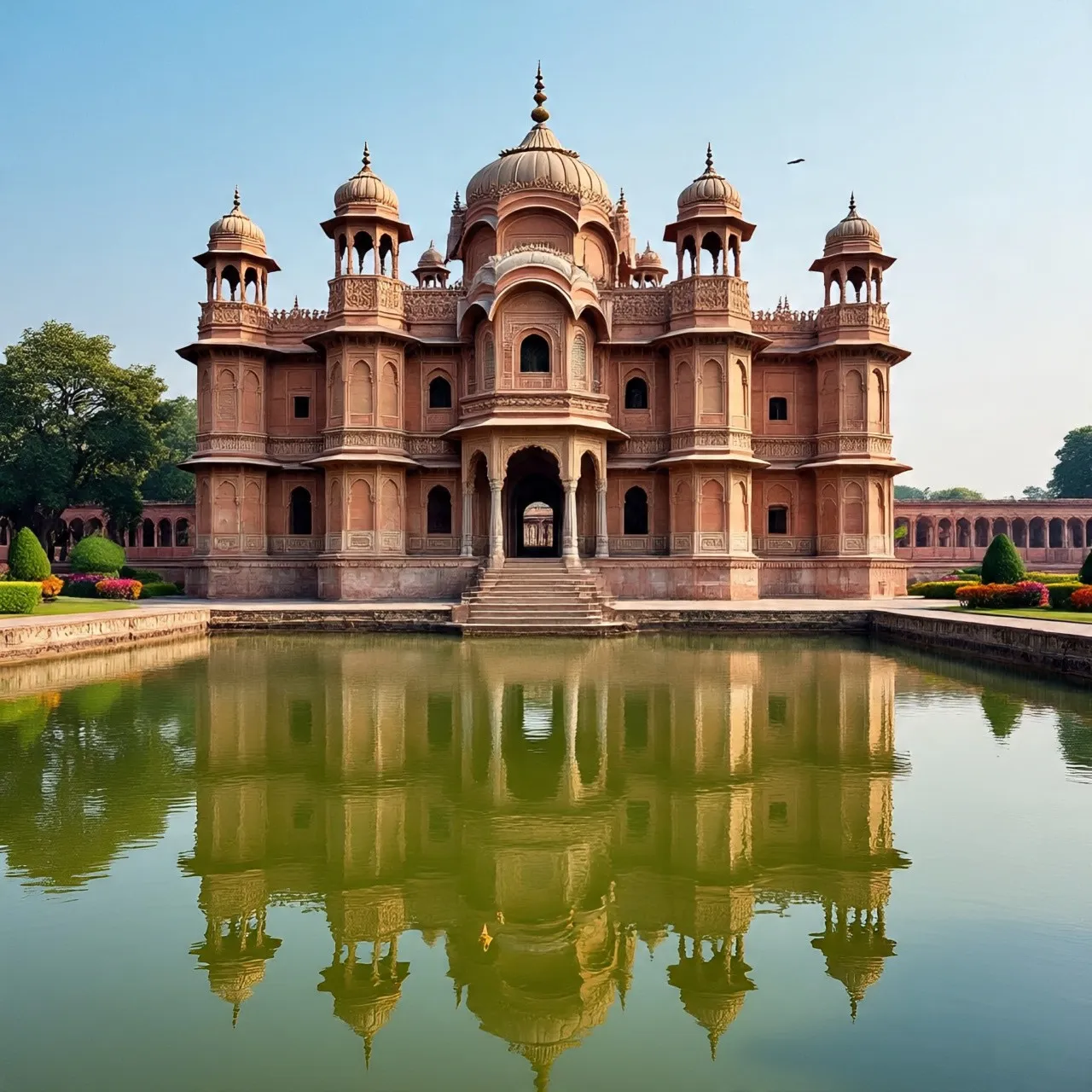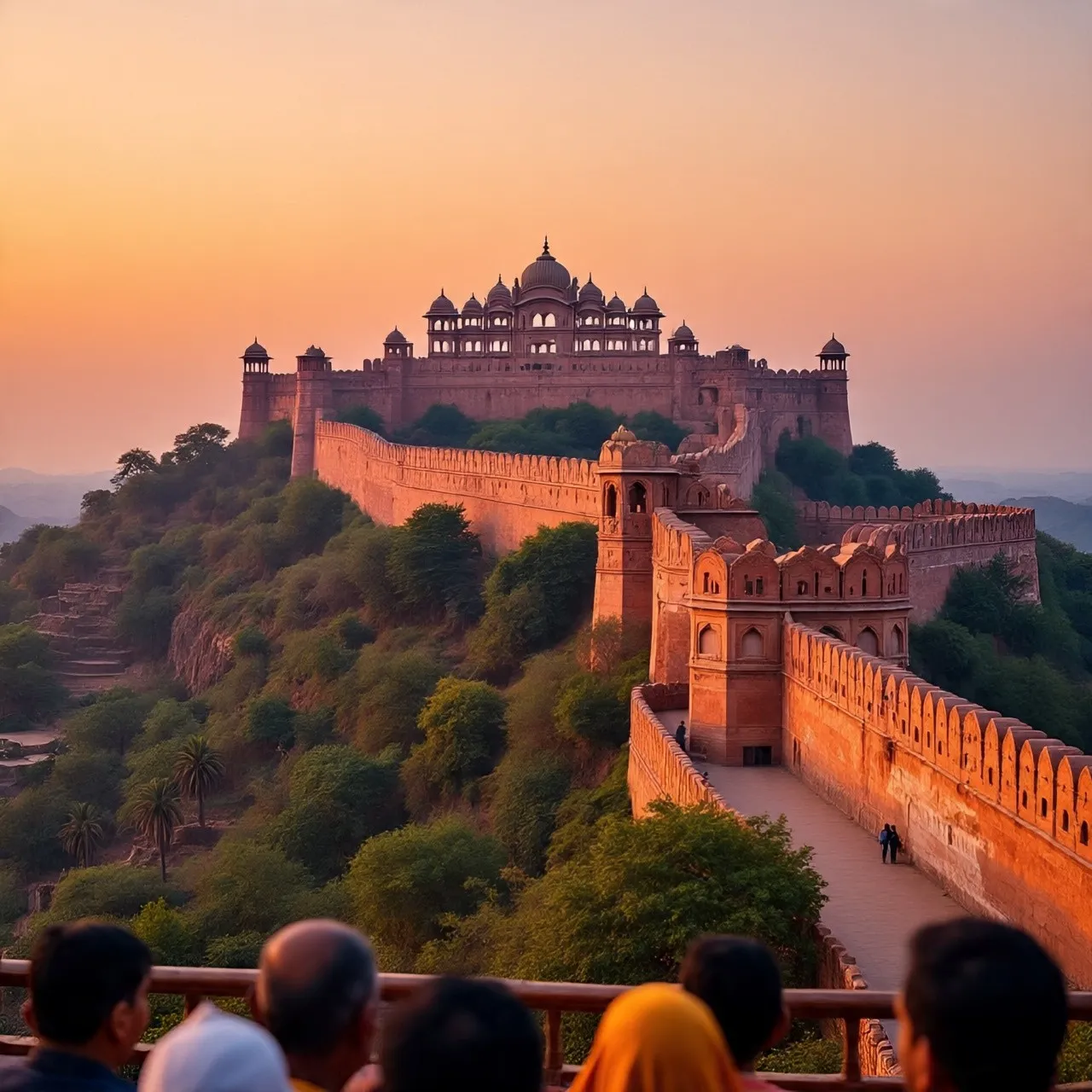🌄 Introduction
The Red Fort, or Lal Qila or Lal Kot, stands as a monumental testament to India’s rich and layered history. Situated in Old Delhi, this iconic structure has witnessed the rise and fall of empires, each leaving an indelible mark on its architecture and legacy.
🕰️ Historical Evolution
Lal Kot: The earliest fortification on the site was Lal Kot, constructed by King Anangpal Tomar of the Tomar dynasty in the 11th century. This fort served as the nucleus of the city that would later become Delhi. Over time, Lal Kot evolved into Qila Rai Pithora, which was expanded and fortified by subsequent rulers, including the Rajputs.
Salimgarh Fort: In the mid-16th century, during the reign of Islam Shah Suri, a fort known as Salimgarh was built near the present Red Fort. This fortification was constructed using red sandstone and was situated on the banks of the Yamuna River.
Mughal Era: The current structure of the Red Fort was commissioned by Mughal Emperor Shah Jahan in 1638, following his decision to shift the capital from Agra to Delhi. The construction, designed by architect Ustad Ahmad Lahori, began in 1638 and was completed in 1648.
🏗️ Architectural Synthesis
The Red Fort is a blend of various architectural styles:
The Red Fort stands as a testament to the architectural evolution of Delhi:
- Pre-Mughal Foundations: The foundations of Lal Kot and Salimgarh Fort laid the groundwork for the Red Fort’s construction. Elements from these earlier structures were integrated into the Mughal design, blending indigenous architectural styles with Mughal innovations.
- Mughal Modifications: Shah Jahan’s vision transformed the site into a grand Mughal palace-fortress. The design incorporated Indo-Islamic architectural elements, with extensive use of red sandstone and marble, reflecting the zenith of Mughal architectural achievements.
- Indo-Islamic Architecture: The fort showcases a high level of ornamentation, integrating Persian, European, and Indian artistic traditions, culminating in a distinctive Shahjahani style characterized by its richness in form, expression, and color.
- Integration of Earlier Structures: Elements from Lal Kot and Salimgarh Fort were incorporated into the Mughal design, blending indigenous architectural styles with Mughal innovations.
- Built from red sandstone, stretching over 254 acres
- Combines Persian, Timurid, and Indian architectural styles
- Key structures inside:
- Diwan-i-Aam (Hall of Public Audience)
- Diwan-i-Khas (Hall of Private Audience)
- Rang Mahal (Palace of Colors)
- Mumtaz Mahal, Khas Mahal, Naubat Khana
- Features massive gates, including Lahori Gate and Delhi Gate
🏛️ Cultural Significance
The Red Fort’s significance extends beyond its architectural grandeur:
- Symbol of Continuity: The integration of earlier structures into the Red Fort symbolizes the continuity of Delhi’s rich history, where successive cultures and rulers have contributed to the city’s legacy.
- UNESCO World Heritage Site: Recognizing its historical and architectural importance, the Red Fort was designated a UNESCO World Heritage Site in 2007.
🌟 Highlights / Attractions Inside Red Fort
- Sound & Light Show: Evening show depicting Mughal history
- Museums: Display of Mughal artifacts, coins, paintings
- Beautiful Gardens: Mughal-style lawns and fountains
- Photography: Iconic view of massive red sandstone walls
🧭 Travel Guide
📍 How to Reach
- By Metro: Red Fort Station (Violet Line)
- By Road: Easily accessible from Connaught Place and Chandni Chowk
- By Train / Airport: Delhi railway stations and IGI Airport (20 km away)
⏰ Best Time to Visit
- October – March: Pleasant weather
- Morning Visit: Avoids crowd and heat
🕓 Ideal Duration
- 2–3 hours for exploring the fort and nearby museums
- Extra 1–2 hours for the Sound & Light show
💸 Expenses
| Activity | Cost (INR) |
|---|---|
| Entry Fee | ₹40 (Indians) / ₹550 (Foreigners) |
| Guided Tour | ₹200–500 |
| Photography | Free |
| Local Transport | ₹200–400 |
Total Estimated Cost: ₹300–1,500 per person
💡 Visitor Tips
✅ Carry sunscreen and water; summers can be hot
✅ Hire a local guide for historical insights
✅ Wear comfortable shoes; uneven stone pathways
✅ Visit early to avoid crowds
✅ Respect restricted areas


